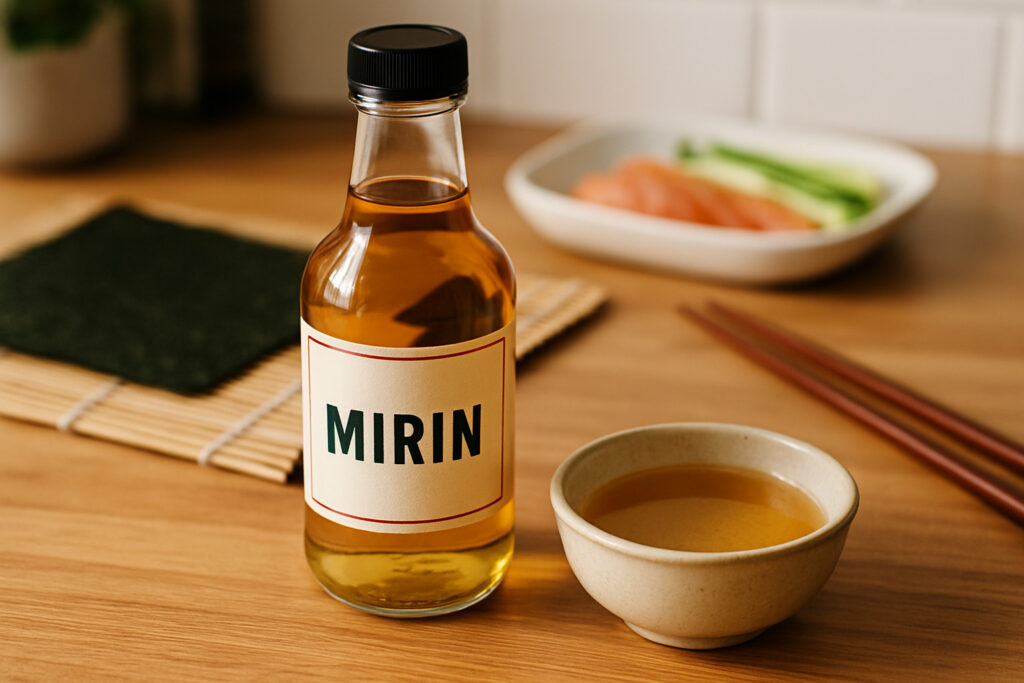Why Mirin is Essential for Authentic Japanese Cooking
Mirin is a sweet Japanese rice wine that transforms ordinary dishes into restaurant-quality meals with its unique umami-rich sweetness and glossy finish. Made from glutinous rice, rice koji, and shochu, this golden liquid contains about 14% alcohol and delivers complex flavors that regular sugar simply cannot match.
Quick Facts About Mirin:
- What it is: Sweet Japanese rice wine seasoning
- Main ingredients: Glutinous rice, rice koji mold, shochu
- Alcohol content: 14% (hon-mirin) to less than 1% (mirin-style seasonings)
- Key uses: Teriyaki glazes, marinades, sauces, and simmered dishes
- Flavor profile: Mellow sweetness with deep umami complexity
Originally consumed as a sweet alcoholic drink during Japan’s Sengoku period (1467-1615), mirin evolved into an indispensable cooking ingredient by the Edo period. Today, only about 1% of mirin sold in Japan uses traditional brewing methods, making authentic hon-mirin a rare treasure.
What makes mirin special isn’t just its sweetness – it’s the 17 amino acids and natural sugars created during fermentation that add depth, create beautiful glazes, and help ingredients hold their shape during cooking. The alcohol content also helps remove fishy odors and allows flavors to penetrate ingredients more effectively.
Whether you’re glazing salmon teriyaki, simmering nikujaga stew, or experimenting with fusion cocktails, understanding mirin opens doors to authentic Japanese flavors that will lift your home cooking.
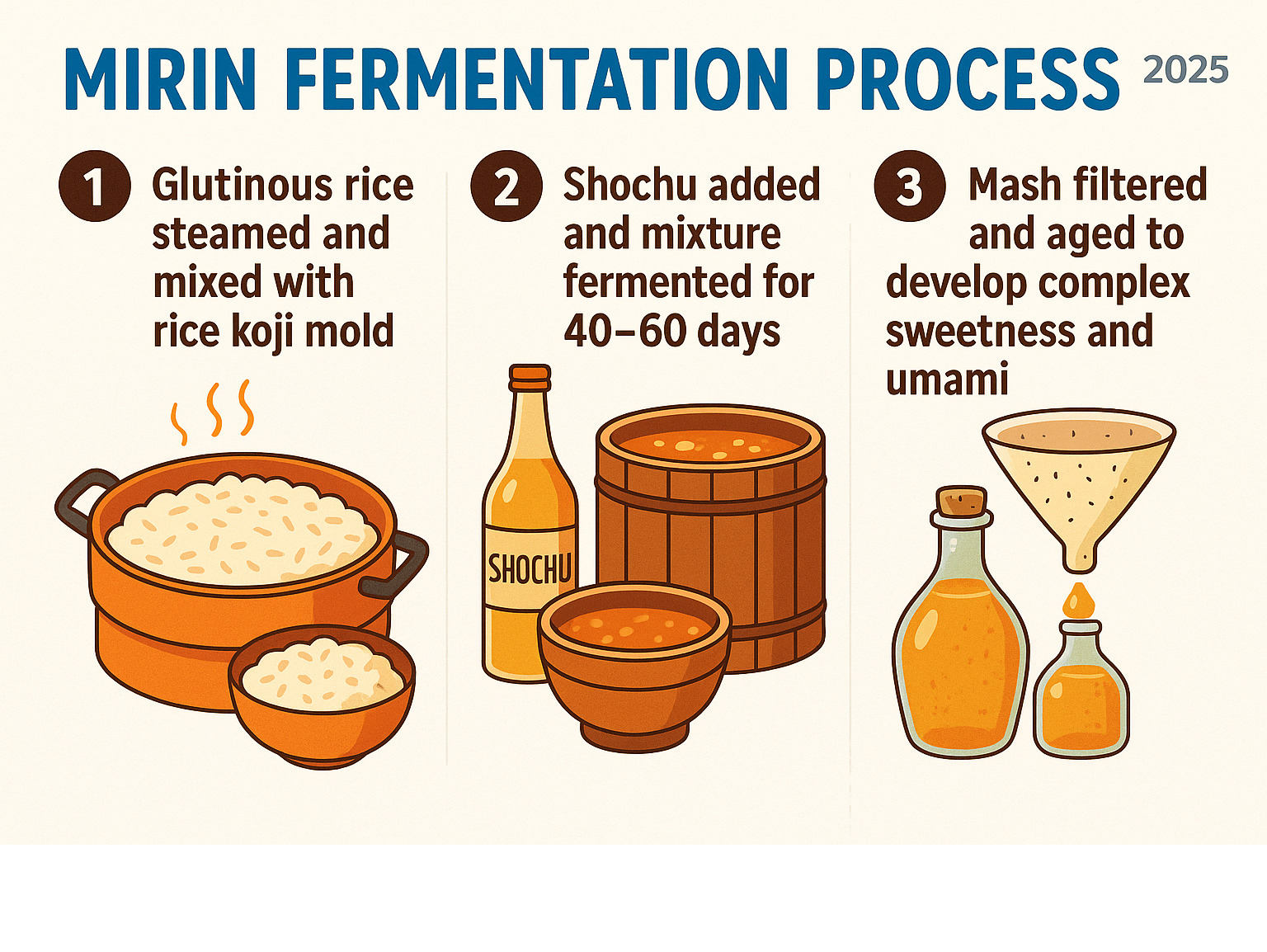
What Is Mirin?
Think of mirin as sake’s sweeter, gentler cousin. While both are Japanese rice wines, mirin takes a completely different path. Instead of being crafted for sipping, mirin is designed specifically for cooking, with a higher sugar content and a more mellow alcohol presence that makes it perfect for the kitchen.
The magic starts with three simple ingredients: glutinous rice (that sticky rice you might know from sushi), rice koji mold, and shochu (a distilled Japanese spirit). These ingredients come together in a fermentation dance that creates something truly special.
What emerges is a golden liquid with about 14% alcohol content and a complex sugar profile that goes way beyond simple sweetness. We’re talking glucose, oligosaccharides, and other naturally occurring sugars that create layers of flavor. This isn’t the one-note sweetness of table sugar – it’s a sophisticated blend that adds real depth to everything from simple miso soup to elaborate glazes.
The story of mirin stretches back to Japan’s Sengoku period (around the 1500s), possibly arriving from China or developing from local brewing traditions. During the Edo period, something interesting happened – mirin transformed from a luxury drink enjoyed by women who preferred its sweetness over harsh sake into an essential cooking ingredient. Restaurants specializing in eel and soba noodles couldn’t imagine cooking without it.
Here’s where science gets exciting: the Maillard reaction plays a starring role in mirin’s development, especially during aging. This chemical process between amino acids and sugars creates that beautiful golden color and the complex flavor compounds that make aged mirin so treasured by chefs.
The Chemistry Behind Mirin’s Sweetness
The sweetness in mirin isn’t just sugar thrown into rice wine – it’s the result of some pretty amazing enzymatic magic. During fermentation, the rice koji mold (with the fancy name Aspergillus oryzae) acts like a tiny factory, producing enzymes that break down rice starches through something called saccharification.
These hardworking enzymes convert complex carbohydrates into simpler sugars like glucose and maltose. But here’s the really cool part – the same enzymes are simultaneously breaking down rice proteins into amino acids, creating those umami compounds that give mirin its distinctive savory-sweet character. It’s like getting two flavor changes for the price of one.
The fermentation process also produces organic acids like lactic acid and citric acid, which add subtle tartness and help preserve the final product. These acids work together with the natural sugars to create mirin’s characteristic mellow sweetness that seems to “melt away” on your palate, changing into deeper umami flavors as you taste it.
Traditional Hon-Mirin vs Modern Aji-Mirin
The difference between traditional hon-mirin and modern aji-mirin is like comparing a fine aged wine to grape juice with some alcohol added. Hon-mirin undergoes a lengthy fermentation process lasting 40-60 days, followed by aging that can stretch for years. This traditional method creates complex flavors and natural sweetness without any added sugars – it’s all about patience and time.
Aji-mirin, on the other hand, is the modern convenience option. It mimics mirin’s flavor using added sweeteners like corn syrup or sugar, along with flavor improvers. While it’s more affordable and easier to find in stores, it lacks the depth and cooking properties that make true hon-mirin so special.
The distinction became important because of Japan’s tax laws. Since hon-mirin contains significant alcohol, it gets taxed as a liquor. Smart manufacturers developed lower-alcohol versions to avoid these taxes, creating the various mirin-style seasonings we see lining grocery store shelves today.
| Aspect | Mirin | Sake |
|---|---|---|
| Purpose | Cooking seasoning | Drinking |
| Alcohol Content | 14% | 15-20% |
| Sweetness | High (natural sugars) | Dry to off-dry |
| Fermentation Time | 40-60 days | 18-32 days |
| Primary Use | Glazes, marinades, sauces | Beverage |
The Four Major Types of Mirin
Shopping for mirin can feel overwhelming when you’re staring at shelves lined with bottles covered in Japanese characters. The good news? There are really just four main types to understand, each with its own personality and purpose in the kitchen. The Kikkoman glossary offers additional technical details, but let’s break down what matters for your cooking.
Think of these types as ranging from “the real deal” to “weeknight convenience” – and honestly, each has its place depending on what you’re making and who you’re cooking for.
Hon-Mirin: The Gold Standard
Hon-mirin (真みりん) is the superstar of the mirin world – the one that makes Japanese chefs get a little dreamy-eyed when they talk about it. With 14% alcohol by volume and zero added salt, this is what mirin was meant to be before modern shortcuts came along.
The magic happens during that 40-60 day mashing period where glutinous rice, rice koji, and shochu slowly transform into liquid gold. But here’s where it gets really interesting – the aging process can stretch for years, sometimes even decades. During this time, the mirin develops deeper amber colors and flavors so complex they rival fine dessert wines.
Premium aged hon-mirin tells a story in every drop. The Maillard reaction works its chemistry magic during aging, creating layers of flavor that dance between sweet and savory. Some varieties aged for ten years or more develop almost brandy-like characteristics that will make you question everything you thought you knew about cooking wine.
When you cook with hon-mirin, you get all six traditional benefits that Japanese cooks have treasured for centuries: sophisticated sweetness that doesn’t cloy, deep umami that makes everything taste more like itself, that gorgeous lustrous glaze, natural odor elimination, improved flavor penetration, and the ability to help ingredients hold their shape during cooking.
Shio-Mirin & Aji-Mirin: Pantry Convenience
Here’s where things get practical. Shio-mirin contains at least 1.5% salt – not for flavor, but to dodge Japan’s alcohol taxes. It’s a clever workaround that makes real mirin more affordable, though you’ll need to dial back other seasonings in your recipes to account for that extra saltiness.
Aji-mirin (literally “tastes like mirin”) is the friendly compromise you’ll find in most international markets. With less than 1% alcohol and added sweeteners doing the heavy lifting, it won’t win any authenticity awards, but it’s budget-friendly and gets the job done for everyday cooking.
Both types work beautifully for weeknight dinners when you want that mirin magic without the fuss. They’re especially perfect when you’re cooking for kids or anyone avoiding alcohol – you still get the sweetness and some of that precious umami depth that makes Japanese food so satisfying.
Mirin-fu Chōmiryō: Low-Alcohol Seasoning
Mirin-fu chōmiryō (みりん風調味料) translates to “mirin-style seasoning,” which is basically Japanese for “we made this taste like mirin without actually making mirin.” With minimal alcohol content (often less than 0.5%), it’s essentially a sweet seasoning that mimics mirin’s flavor using added sugars and flavor improvers.
This is your completely kid-safe option that doesn’t need any special storage beyond a cool, dry spot in your pantry. Once opened, toss it in the fridge and use it within a few months. While mirin purists might turn their noses up, it’s perfectly fine for casual cooking and gives you that signature sweetness without any alcohol concerns.
The beauty of understanding these different types is that you can choose based on what you’re making. Glazing expensive sashimi-grade fish? Go for the hon-mirin. Making a quick weeknight stir-fry? The mirin-style seasoning will do just fine.
Culinary Magic: Using Mirin in the Kitchen
Mirin is like having a secret ingredient that instantly lifts your cooking from good to restaurant-quality. This golden rice wine doesn’t just add sweetness – it’s a multitasking marvel that improves umami, creates gorgeous glazes, and solves common cooking problems you might not even realize you have.
The magic happens because mirin works on multiple levels simultaneously. Its alcohol content acts as a natural odor eliminator, which is why Japanese cooks add it when preparing fish or seafood. The alcohol also helps flavors penetrate ingredients more quickly and evaporates during cooking to concentrate all those delicious tastes.
But here’s where it gets really interesting – mirin’s natural sugars caramelize beautifully when heated, creating that signature glossy finish that makes teriyaki chicken look so irresistible. This is literally where the word “teriyaki” comes from – “teri” means shine or glaze, and “yaki” means grilled.
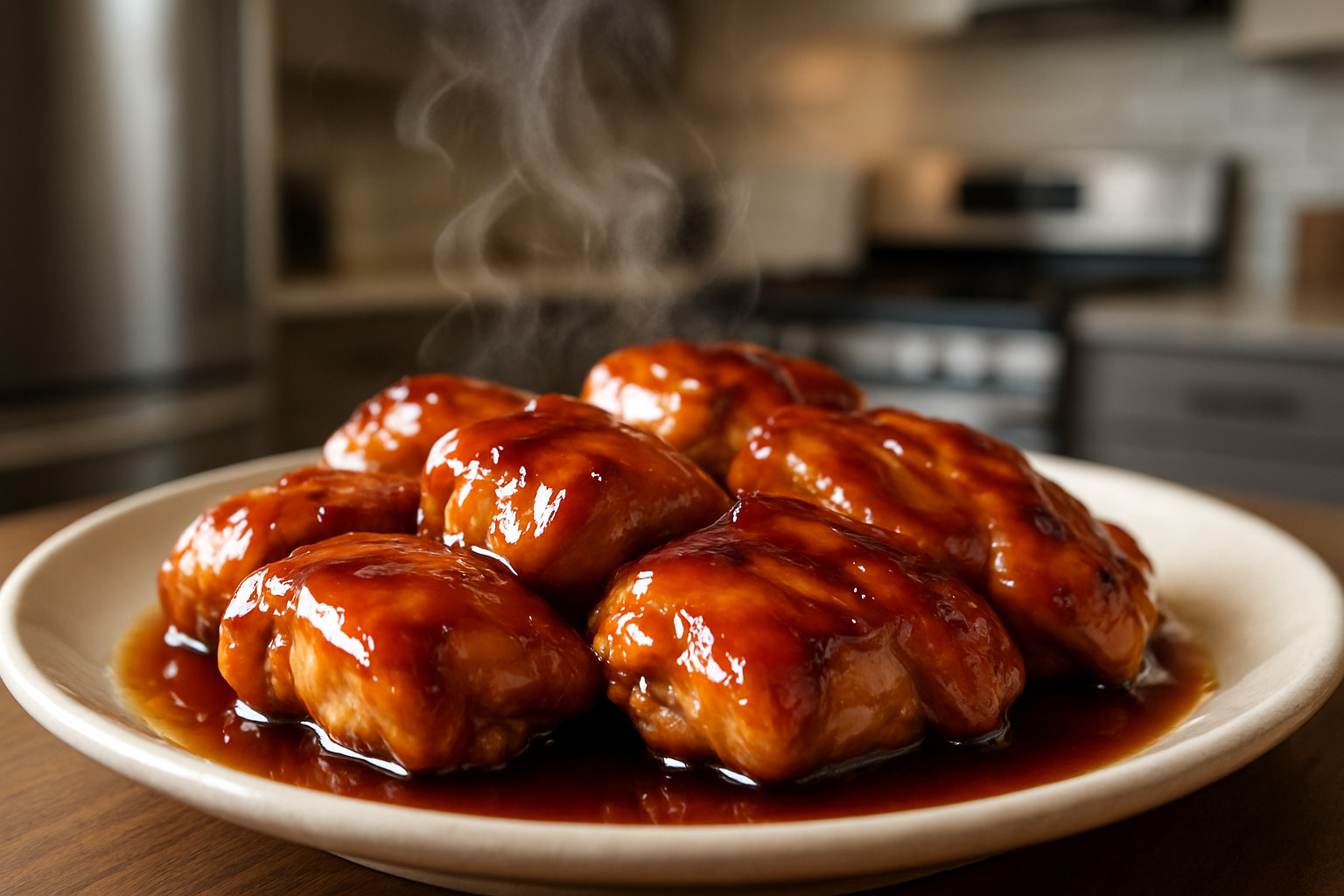
Japanese chefs follow a time-tested principle called “sa shi su se so” when seasoning dishes. This refers to the order in which seasonings should be added: sugar (including mirin), salt, vinegar, soy sauce, and miso. Mirin goes in early because its sweetness helps other flavors penetrate ingredients more effectively.
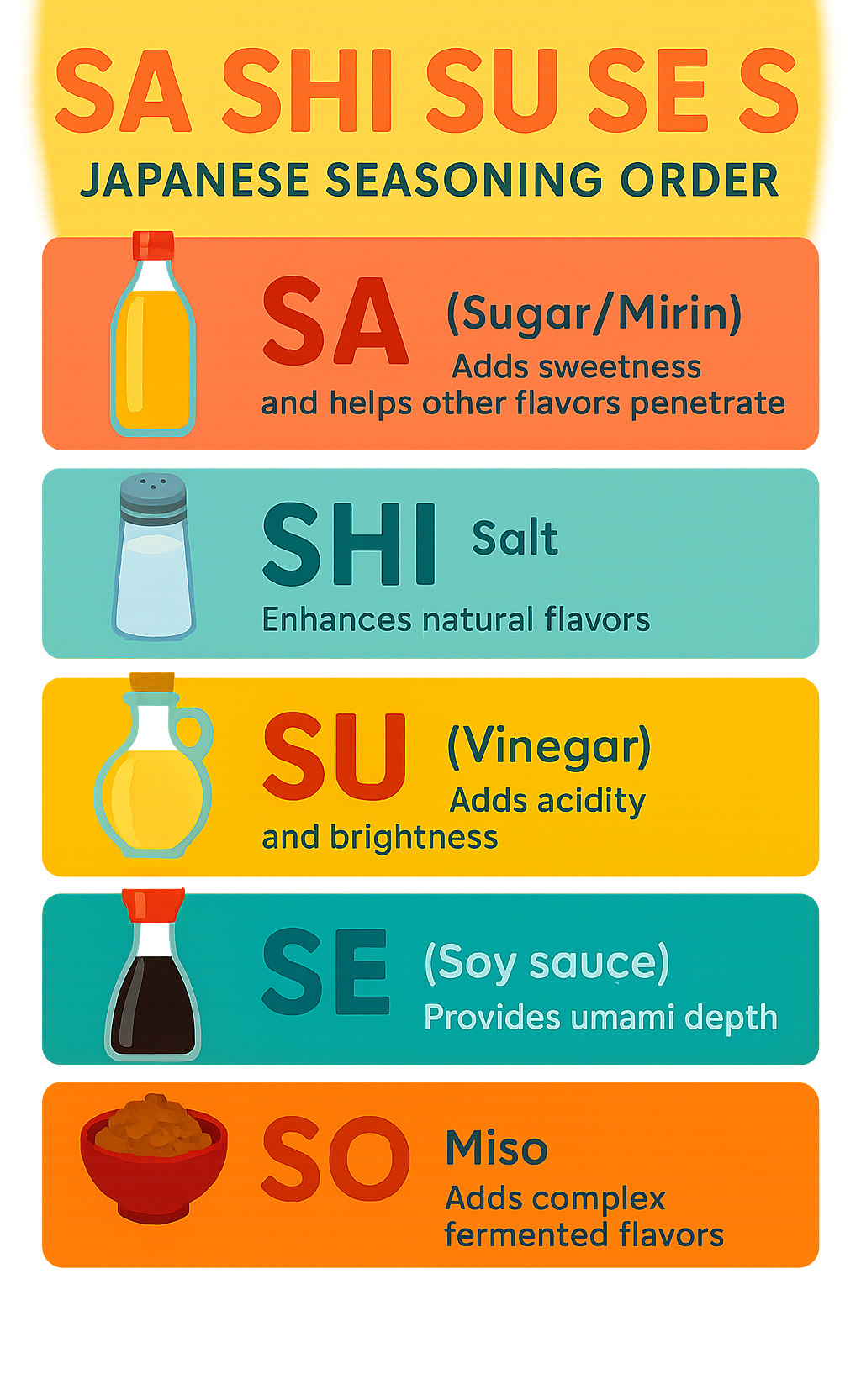
Classic Japanese Dishes With Mirin
Teriyaki might be mirin’s most famous starring role, but it’s just the beginning. When you combine mirin with soy sauce and sake, you get that perfect balance of sweet, salty, and umami that makes everything from chicken to salmon absolutely irresistible. The key is letting the mirin caramelize slightly to develop that characteristic shine.
Nikujaga, Japan’s ultimate comfort food, showcases another of mirin’s superpowers. This hearty beef and potato stew relies on mirin to keep the potatoes intact during long simmering. The alcohol and natural sugars create a protective coating that prevents vegetables from falling apart while still allowing flavors to soak in.
Oyakodon – literally “parent and child bowl” because it combines chicken and egg – demonstrates how mirin can balance complex flavors. The sweet rice wine mellows the intensity of the dashi broth while helping create those perfectly silky eggs that make this dish so satisfying.
Unagi tare, the glossy sauce that makes grilled eel so addictive, has a fascinating history with mirin. Back in the Edo period, sugar was expensive, so clever restaurant owners used mirin instead to create that sweet, lustrous coating that customers couldn’t resist.
If you’re exploring sushi at home, mirin plays important roles in sushi rice preparation and various sauces. Check out our detailed guides on sashimi and nigiri to learn more about these classic preparations.
Mirin Beyond Japan & Fusion Ideas
Modern chefs have finded that mirin’s magic extends far beyond traditional Japanese cooking. Its unique flavor profile works beautifully in marinades for grilled meats, where the natural sugars create excellent caramelization while the alcohol helps tenderize proteins.
Creative bartenders have acceptd aged mirin as a cocktail ingredient, using it as a substitute for sweet vermouth or as a base for Japanese-inspired drinks. Premium aged mirin can even be sipped neat over ice, like a fine dessert wine.
Barbecue enthusiasts love mirin for glazes because it behaves differently than simple sugar-based sauces. While regular sugar can burn and turn bitter, mirin’s balanced sweetness and amino acids create beautiful color and flavor without excessive charring.
The fusion movement has particularly acceptd mirin’s versatility. Innovative restaurants like Kansha Japanese-Peruvian showcase how this Japanese staple can bridge culinary traditions, adding depth and complexity to dishes from completely different food cultures.
Health, Nutrition & Storage Facts About Mirin
Mirin brings more to the table than just incredible flavor – it’s surprisingly nutritious too. With a glycemic index of just 15, mirin won’t spike your blood sugar like regular sweeteners do. This makes it a smart choice for anyone watching their glucose levels or simply wanting steadier energy throughout the day.
What really sets mirin apart nutritionally is its fermentation heritage. The months-long brewing process creates 17 different amino acids, including several essential ones your body can’t make on its own. These amino acids don’t just contribute to mirin’s signature umami taste – they also support muscle recovery and overall health.
Here’s something fascinating: aged mirin actually gets more nutritious over time. As it sits in those traditional wooden barrels, antioxidant compounds develop through natural chemical reactions. The deeper golden color you see in aged mirin? That’s visual proof of these beneficial compounds forming.
Your gut will thank you for choosing mirin too. The complex sugars called oligosaccharides act as prebiotics, feeding the good bacteria in your digestive system. Unlike simple sugars that get absorbed quickly, these beneficial compounds make it all the way to your colon where they support digestive health.
Nutritional Snapshot of Mirin
A tablespoon of mirin contains roughly 40-50 calories – not bad for something that adds such complex flavor to your cooking. Those calories come almost entirely from carbohydrates, with virtually no fat and just traces of protein.
The carbs in mirin aren’t your typical refined sugars though. They’re complex natural sugars created during fermentation, which explains why mirin tastes so much more sophisticated than corn syrup or regular sugar. Your body processes these natural sugars more gently, avoiding those energy crashes that come with processed sweeteners.
Sodium levels vary dramatically depending on which type you choose. Hon-mirin contains almost no salt, while shio-mirin packs about 1.5% salt by weight. Always check the label if you’re watching your sodium intake – this difference can really impact your recipes.
Storing Mirin for Maximum Flavor
Getting the most from your mirin investment means storing it properly. Hon-mirin actually prefers room temperature storage in a cool, dark spot – your pantry is perfect. Refrigerating it can cause the natural sugars to crystallize, creating an unpleasant grainy texture.
Once you crack open that bottle of hon-mirin, you’ve got about three months to use it at peak quality. The alcohol content helps preserve it naturally, but exposure to air and light will gradually dull those complex flavors you paid for.
Low-alcohol mirin varieties need different treatment. These should go straight into the refrigerator after opening and get used within a few months. Without that protective alcohol content, they’re more vulnerable to spoilage.
The good news? Unopened mirin keeps beautifully for up to 1.5 years when stored properly. Premium aged varieties might even continue developing more complex flavors over time, much like fine wine. Just keep them away from heat and direct sunlight, and they’ll reward you with consistent quality whenever you’re ready to cook.
Buying Mirin & Smart Substitutes
Finding authentic mirin can feel like a treasure hunt, but knowing what to look for makes all the difference. In New York City, Japanese specialty markets offer the widest selection, though you’ll increasingly find basic mirin varieties at mainstream supermarkets and even some corner stores.
The secret to spotting authentic hon-mirin lies in reading the label carefully. Look for the Japanese kanji “本” (hon), which marks the real deal. Genuine mirin should have a short, simple ingredient list: glutinous rice, rice koji, and shochu or alcohol. If you see corn syrup, artificial flavors, or a laundry list of additives, you’re looking at a mirin-style seasoning instead.
Price tells a story too. Authentic hon-mirin costs significantly more than imitation products because of that lengthy 40-60 day fermentation process we discussed earlier. Think of it like buying real vanilla extract versus imitation – the price difference reflects the quality difference. The good news? A little hon-mirin goes a long way, so that premium bottle will last through many cooking trips.
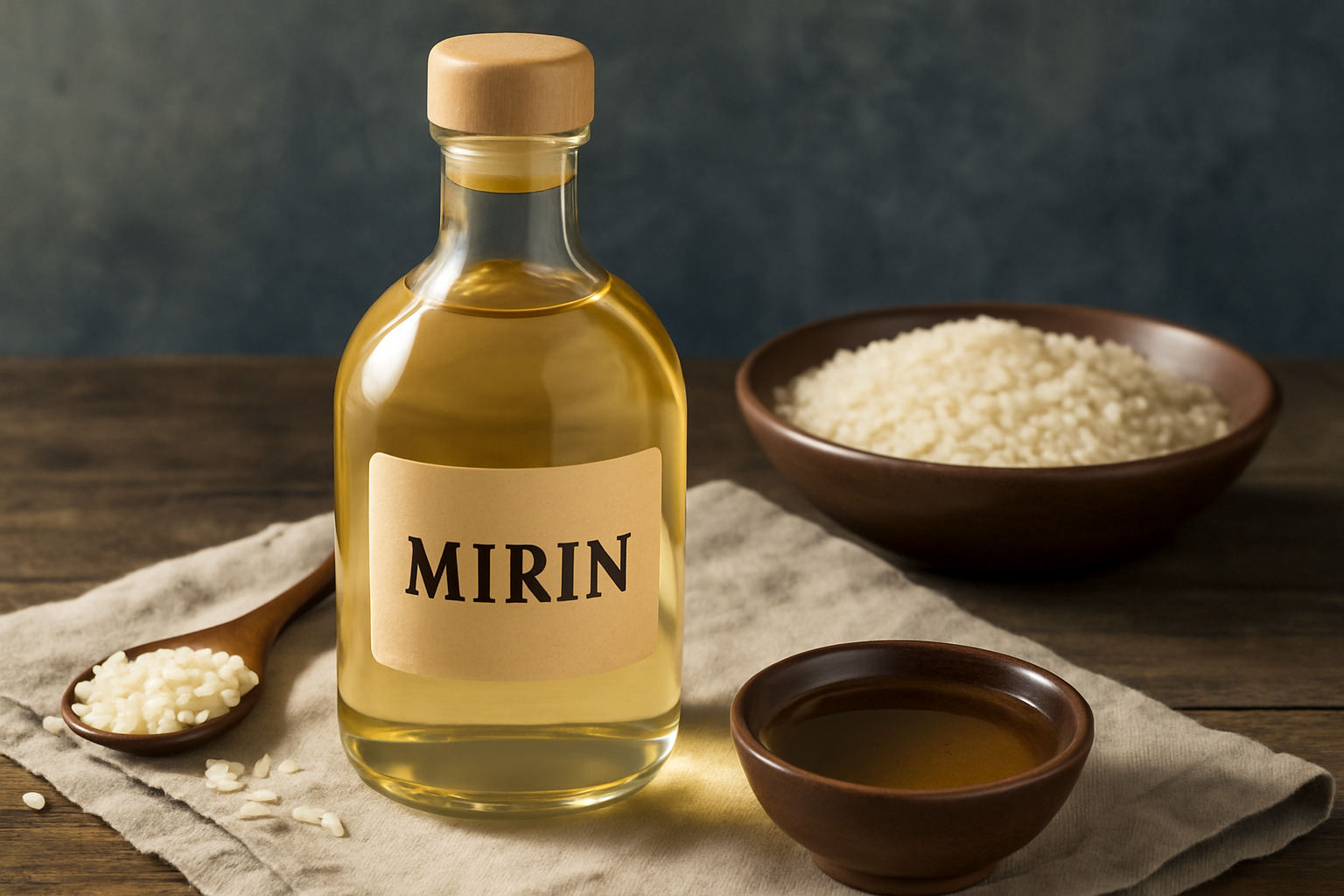
Online shopping opens up more options, especially for premium aged varieties that local stores might not carry. However, buying from specialty stores lets you ask questions and sometimes even taste different types before committing.
For those seeking Japanese ingredients locally, check out our guide to Japanese food near me for sourcing tips and restaurant recommendations.
Choosing the Right Mirin for Your Recipe
Your cooking needs should guide your mirin choice. Planning to cook for kids or someone avoiding alcohol? Mirin-style seasonings with minimal alcohol content work perfectly fine. Want that authentic depth of flavor for a special dinner? Invest in hon-mirin.
Budget-conscious home cooks can take a smart approach: keep affordable aji-mirin for everyday cooking like quick teriyaki stir-fries, while splurging on a bottle of premium hon-mirin for dishes where the complexity truly shines – think slow-simmered nikujaga or homemade unagi sauce.
The cooking method matters too. Quick stir-fries and simple glazes taste great with any mirin type, while dishes that simmer for hours really showcase hon-mirin’s sophisticated flavor development.
Don’t forget about salt content when choosing. If you’re using shio-mirin with its 1.5% salt addition, dial back other salty ingredients in your recipe. Your taste buds will thank you for the balanced result.
DIY Mirin Substitutes When You’re Out
Even the best-planned pantry sometimes runs empty. When you need mirin but don’t have any, several substitutes can save your recipe. The most reliable substitute combines 3 parts sake with 1 part sugar – just heat them gently until the sugar dissolves completely. This creates similar sweetness and alcohol content, though it won’t have mirin’s complex umami depth.
Dry sherry makes an excellent substitute, especially for glazes and marinades. Its natural nutty sweetness complements many dishes that call for mirin, and it caramelizes beautifully during cooking.
Need a non-alcoholic option? Mix rice vinegar with sugar using about 1/2 teaspoon sugar per tablespoon of vinegar. This creates a sweet-tart flavor that works well in many mirin applications, though it lacks that characteristic umami richness.
Honey thinned with a little water can work in marinades, but watch it carefully during cooking – honey burns more easily than mirin’s natural sugars and won’t give you that perfect glossy finish.
Frequently Asked Questions About Mirin
Does mirin contain gluten or allergens?
Good news for those with gluten sensitivities – mirin is naturally gluten-free! Since it’s crafted from rice rather than wheat-based ingredients, traditional mirin poses no gluten concerns. However, it’s always wise to double-check labels on commercial products, especially mirin-style seasonings that might contain additives or be processed in facilities that also handle wheat.
The main allergen consideration is actually the alcohol content in hon-mirin, which could be problematic if you have alcohol sensitivities. Most mirin varieties are also free from other common allergens like dairy, nuts, and soy, though there’s always a small possibility of cross-contamination during manufacturing.
If you’re dealing with severe allergies, stick with reputable brands that clearly label their ingredients and manufacturing processes.
How long does mirin last after opening?
Once you’ve opened a bottle of hon-mirin, you’ll want to use it within about three months for the best flavor experience. Store it in a cool, dark place – not the refrigerator, as that can actually cause the natural sugars to crystallize and affect the texture.
The alcohol content in authentic mirin acts as a natural preservative, but the complex flavors will gradually fade over time once exposed to air and light. Think of it like a fine wine – it won’t go bad quickly, but it won’t taste as vibrant after extended storage.
Mirin-style seasonings with low alcohol content are a different story entirely. These should definitely go in the refrigerator after opening and be used within 2-3 months. Their lower alcohol content and added ingredients make them more perishable.
Watch out for signs that your mirin has seen better days: off odors, cloudiness, or unusual flavors. When in doubt, it’s better to replace the bottle rather than risk ruining a carefully prepared dish.
Can I use mirin in desserts like mochi or pancakes?
Absolutely! Using mirin in desserts is one of those delightful culinary surprises that works better than you might expect. In pancake batter, mirin creates a slightly chewy, mochi-like texture while adding a subtle sweetness that’s far more interesting than plain sugar.
For mochi and other rice-based desserts, mirin is practically a match made in heaven. It improves the natural rice flavors while providing that gentle sweetness that doesn’t overpower delicate dessert flavors. Some adventurous bakers even use it in pound cakes and bread recipes to prevent staleness and add moisture.
If you’re feeling fancy, try drizzling premium aged mirin over vanilla ice cream as a sophisticated dessert sauce. The complex flavors create an unexpectedly neat finish that will impress dinner guests.
Just remember to use mirin-style seasonings rather than high-alcohol hon-mirin when you’re cooking for children – they’ll get all the flavor benefits without the alcohol content.
Conclusion
Mirin is more than a sweetener—it’s a fast track to authentic Japanese flavor and a versatile tool for every cook. From its origins as a sweet beverage to its modern role as a core seasoning, mirin keeps its character while adapting to new kitchens.
At The Dining Destination in New York City, we see home cooks open up fresh ideas once they understand mirin. Whether glazing teriyaki, mixing cocktails, or adding depth to weeknight meals, this rice wine lifts everything from sushi rice to barbecue sauces.
Choose the right bottle: hon-mirin for special dishes, or convenient mirin-style seasonings for everyday cooking. Store it correctly, keep experimenting, and don’t limit yourself to Japanese recipes—mirin shines in global cuisine.
Ready for more inspiration? Explore our food resource guide and keep finding new ingredients.
Next time you need a quick burst of sweetness, umami, or shine, reach for mirin. One splash is often all it takes.

